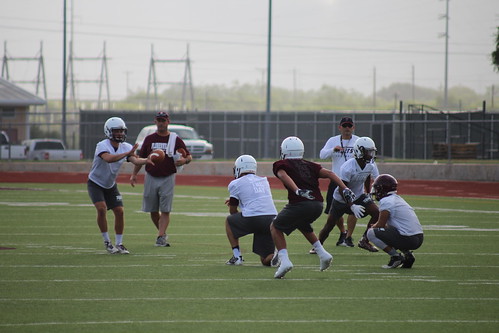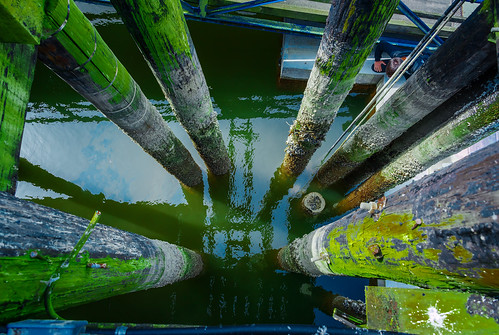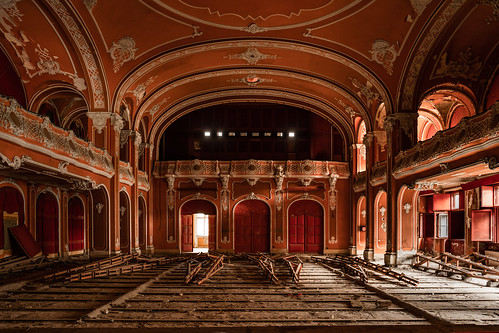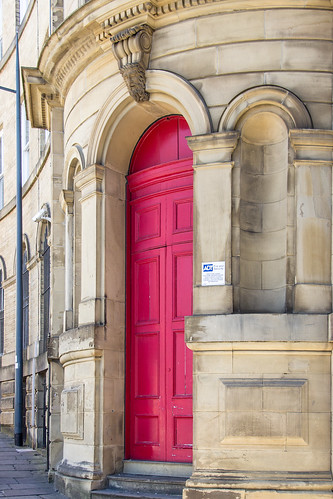Fashion style
Fashion style

Image by brjkt
Fashion style

Image by brjkt
Football

Image by TheMert
Vancouver, British Columbia, Canada (April 2016)

Image by @CarShowShooter
Granville Island is a peninsula and shopping district in Vancouver, British Columbia, Canada. It is located across False Creek from Downtown Vancouver, under the south end of the Granville Street Bridge. The peninsula was once an industrial manufacturing area, but today it is now a hotspot for Vancouver tourism and entertainment. The area has received much acclaim in recent years for its buildings and shopping experience. The area was named after Granville Leveson-Gower, 2nd Earl Granville. The island is home to 275 businesses and facilities that employ more than 2,500 people and generates more than 5-million in economic activity each year. Granville Island provides amenities such as a large public market, an extensive marina, a boutique hotel, the Emily Carr University of Art and Design (named in honour of the artist), Arts Umbrella, False Creek Community Centre, various performing arts theatres including Vancouver’s only professional improvisational theatre company Vancouver Theatresports League, the Arts Club Theatre Company and Carousel Theatre, fine arts galleries, and variety of shopping areas. The Granville Island Public Market features a farmers’ market, day vendors, and artists offering local Vancouver goods. There are 50 permanent retailers and over one-hundred day vendors in stalls throughout the market selling a variety of artisan cottage-industry foods and handmade crafts on a rotating schedule. [source: en.wikipedia.org/wiki/Granville_Island]
Vancouver, officially the City of Vancouver, is a coastal seaport city on the mainland of British Columbia, Canada, and the most populous city in the province. The 2011 census recorded 603,502 people in the city, making it the eighth largest Canadian municipality. The Greater Vancouver area of around 2.4 million inhabitants is the third most populous metropolitan area in the country. Vancouver is one of the most ethnically and linguistically diverse cities in Canada; 52% of its residents have a first language other than English. Vancouver is classed as a Beta global city. The City of Vancouver encompasses a land area of about 114 square km, giving it a population density of about 5,249 people per square km (13,590 per square mi). Vancouver is the most densely populated Canadian municipality with over 250,000 residents, and the fourth most densely populated such city in North America behind New York City, San Francisco, and Mexico City. The original settlement, named Gastown, grew up on clearcuts on the west edge of the Hastings Mill logging sawmill’s property, where a makeshift tavern had been set up on a plank between two stumps and the proprietor, Gassy Jack, persuaded the curious millworkers to build him a tavern, on 1 July 1867. From that first enterprise, other stores and some hotels quickly appeared along the waterfront to the west. Gastown became formally laid out as a registered townsite dubbed Granville, B.I. ("B.I" standing for "Burrard Inlet"). As part of the land and political deal whereby the area of the townsite was made the railhead of the CPR, it was renamed "Vancouver" and incorporated shortly thereafter as a city, in 1886. By 1887, the transcontinental railway was extended to the city to take advantage of its large natural seaport, which soon became a vital link in a trade route between the Orient, Eastern Canada, and Europe. As of 2014, Port Metro Vancouver is the third largest port by tonnage in the Americas (displacing New York), 27th in the world, the busiest and largest in Canada, and the most diversified port in North America. While forestry remains its largest industry, Vancouver is well known as an urban centre surrounded by nature, making tourism its second-largest industry. Major film production studios in Vancouver and Burnaby have turned Greater Vancouver and nearby areas into one of the largest film production centres in North America, earning it the film industry nickname, Hollywood North. [source: en.wikipedia.org/wiki/Vancouver]
Marble Gallery #10 Cinema Hall

Image by Broken Window Theory
In a town somewhere in Hungary with historical and cultural value we discovered one of the most beautiful ballrooms of the whole country. As one of the few cinemas in the region, this used to be the center of attraction for art lovers and the youth. The last screening, however, was already ten years ago and since then the stately theater has been rotting away at a rapid pace. Lately, it has become an insider’s tip of the local urbex community. We were one of the first international photographers when we explored this place. It’s hard to believe that such an architecturally impressive structure lies forgotten within the city center. As the last visitors of the theater we’re trying to bring history to life and show you the beauty of decay.
Here you can find our documentary about this unique structure: youtu.be/C2M3QHIKRjI
Vicar Lane, Little Germany, Bradford, England

Image by Billy Wilson Photography
Grade II listed historic warehouse constructed in 1866.
"Little Germany, Bradford, is an area of particular historical and architectural interest in central Bradford, West Yorkshire, England. The architecture is predominantly neoclassical in style with an Italian influence. Many individual buildings are listed, and Little Germany is also protected as a Conservation Area.
The buildings within Little Germany date back to the 19th century, developing from 1855. Most of the buildings were constructed for the use of textile businesses, although are also a few non-commercial buildings, for example Baptist and Methodist chapels. The commercial buildings are the legacy of merchants from mainland Europe, many of them Jewish, who spent large sums of money constructing imposing warehouses for the storage and sale of their goods for export. A large proportion of the merchants came from Germany hence the name Little Germany. Bradford became more attractive as a centre of international trade in the aftermath of the Franco-Prussian War, which disrupted commercial relations between France and Germany.
Architectural practices included Milnes & France, Lockwood & Mawson, Andrews & Delaunay and J.T. Fairbank building in italianate style. An 1871 building by George Corson for Scottish clients is in Scottish baronial style. Caspian House (61 East Parade) was built in 1873, as the warehouse of D. Delius and Company; the senior partner in the business was the father of the composer Frederick Delius.
Little Germany is also the home of the Bradford Playhouse, which has a mural on the back of the building that commemorates the centenary of the founding of the Independent Labour Party in Bradford in 1893.
Bradford /ˈbrædfərd/ is a city in West Yorkshire, England, in the foothills of the Pennines, 8.6 miles (14 km) west of Leeds, and 16 miles (26 km) north-west of Wakefield. Bradford became a municipal borough in 1847, and received its charter as a city in 1897. Following local government reform in 1974, city status was bestowed upon the City of Bradford metropolitan borough.
Bradford forms part of the West Yorkshire Urban Area, which in 2001 had a population of 1.5 million and is the fourth largest in the United Kingdom. Bradford itself has a population of 529,870, which makes it the seventh-largest city in the United Kingdom and the third-largest city in Yorkshire and the Humber after Leeds and Sheffield.
Historically part of the West Riding of Yorkshire, Bradford rose to prominence in the 19th century as an international centre of textile manufacture, particularly wool. It was a boomtown of the Industrial Revolution, and amongst the earliest industrialised settlements, rapidly becoming the "wool capital of the world". The area’s access to a supply of coal, iron ore and soft water facilitated the growth of Bradford’s manufacturing base, which, as textile manufacture grew, led to an explosion in population and was a stimulus to civic investment; Bradford has a large amount of listed Victorian architecture including the grand Italianate City Hall.
The textile sector in Bradford fell into decline from the mid-20th century. Bradford has since emerged as a tourist destination, becoming the first UNESCO City of Film with attractions such as the National Science and Media Museum, Bradford City Park, the Alhambra theatre and Cartwright Hall. Bradford has faced similar challenges to the rest of post-industrial Northern England, including deindustrialisation, social unrest and economic deprivation." – info from Wikipedia.
Summer 2019 I did a solo cycling tour across Europe through 12 countries over the course of 3 months. I began my adventure in Edinburgh, Scotland and finished in Florence, Italy cycling 8,816 km. During my trip I took 47,000 photos.
Now on Instagram.
Become a patron to my photography on Patreon.
 Cinderella Solution Diet Review 2020 – Will It Really Work for You?
Cinderella Solution Diet Review 2020 – Will It Really Work for You? EZ Battery Reconditioning Review – Ridiculously Powerful Technique to Revive Dead Batteries?
EZ Battery Reconditioning Review – Ridiculously Powerful Technique to Revive Dead Batteries? Resurge Supplement Review 2020 – Does This Dinner Ritual Actually Work?
Resurge Supplement Review 2020 – Does This Dinner Ritual Actually Work? Text Chemistry Review (2020) – Does It Make You Irresistible to Men?
Text Chemistry Review (2020) – Does It Make You Irresistible to Men? 8 Week Keto Custom Plan Review – Does It Really Work?
8 Week Keto Custom Plan Review – Does It Really Work?